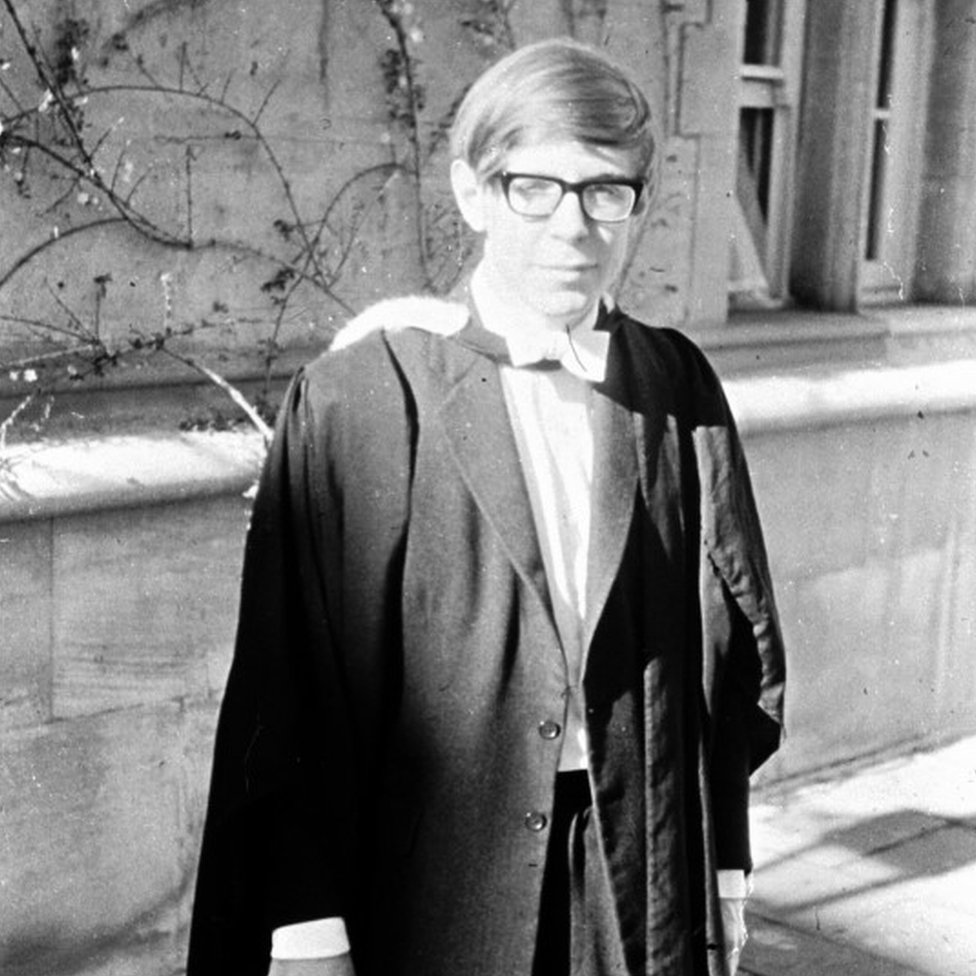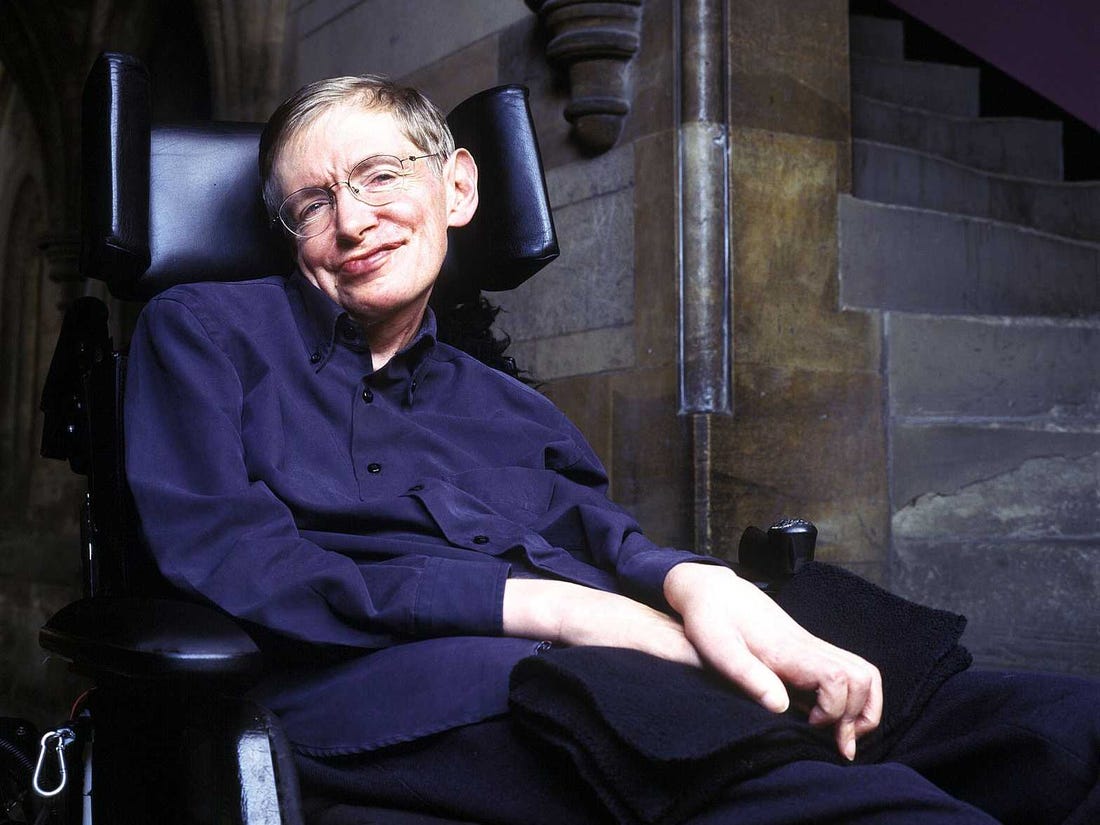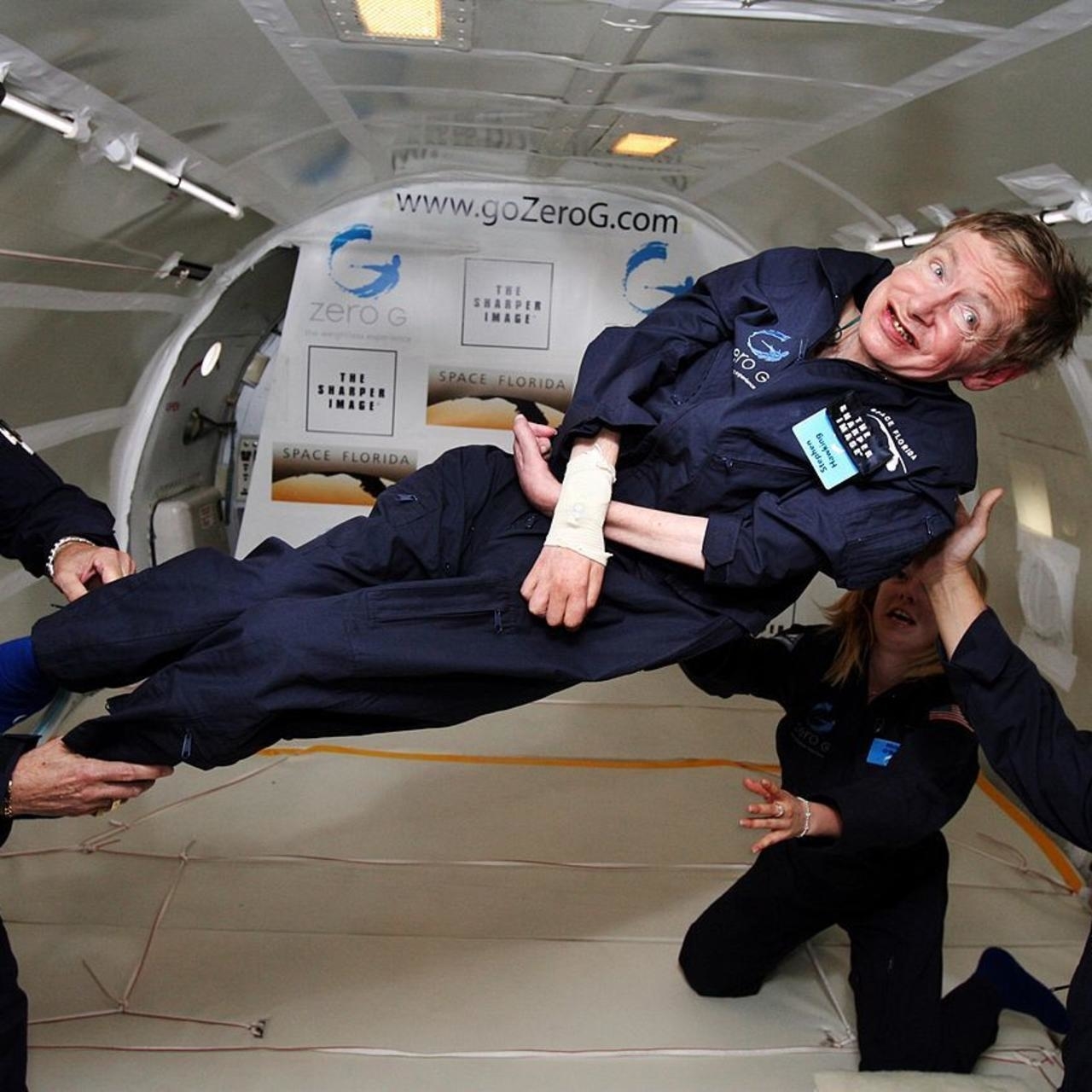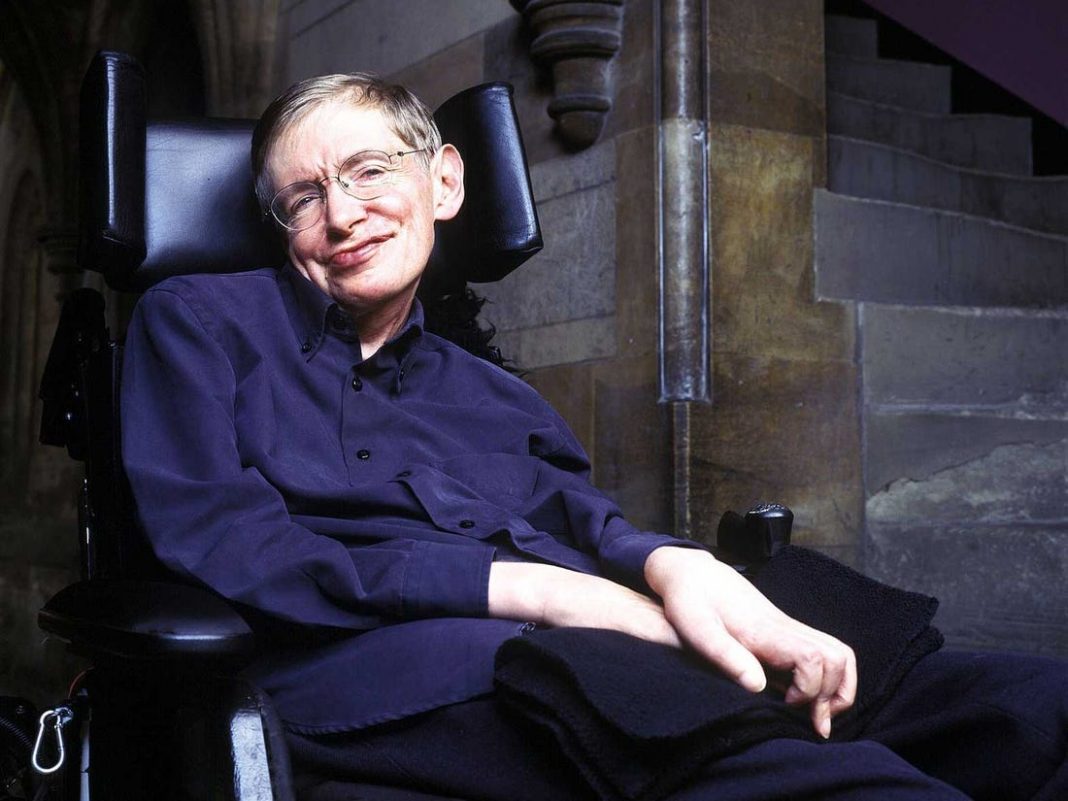A challenging life
British cosmologist Stephen William Hawking was born in England on Jan. 8, 1942 — 300 years to the day after the death of the astronomer Galileo Galilei. He attended University College, Oxford, where he studied physics, despite his father’s urging to focus on medicine. Hawking went on to Cambridge to research cosmology, the study of the universe as a whole.

In early 1963, just shy of his 21st birthday, Hawking was diagnosed with motor neuron disease, more commonly known as Lou Gehrig’s disease or amyotrophic lateral sclerosis (ALS). He was not expected to live for more than two years. Completing his doctorate did not appear likely. Yet, Hawking defied the odds, not only attaining his Ph.D. but also forging new roads into the understanding of the universe in the decades since.
As the disease spread, Hawking became less mobile and began using a wheelchair. Talking grew more challenging and, in 1985, an emergency tracheotomy caused his total loss of speech. A speech-generating device constructed at Cambridge, combined with a software program, served as his electronic voice, allowing Hawking to select his words by moving the muscles in his cheek.
Just before his diagnosis, Hawking met Jane Wilde, and the two were married in 1965. The couple had three children before separating. Hawking remarried in 1995 but divorced in 2006.
Hawking continued at Cambridge after his graduation, serving as a research fellow and later as a professional fellow. In 1974, he was inducted into the Royal Society, a worldwide fellowship of scientists. In 1979, he was appointed Lucasian Professor of Mathematics at Cambridge, the most famous academic chair in the world (the second holder was Sir Isaac Newton, also a member of the Royal Society).

Over the course of his career, Hawking studied the basic laws governing the universe. He proposed that, since the universe boasts a beginning — the Big Bang — it likely will have an ending. Working with fellow cosmologist Roger Penrose, he demonstrated that Albert Einstein’s Theory of General Relativity suggests that space and time began at the birth of the universe and ends within black holes, which implies that Einstein’s theory and quantum theory must be united.
Using the two theories together, Hawking also determined that black holes are not totally dark but instead emit radiation. He predicted that, following the Big Bang, black holes as tiny as protons were created, governed by both general relativity and quantum mechanics.
In 2014, Hawking revised his theory, even writing that ” there are no black holes” — at least, in the way that cosmologists traditionally understand them. His theory removed the existence of an “event horizon,” the point where nothing can escape. Instead, he proposed that there would be an “apparent horizon” that would alter according to quantum changes within the black hole. But the theory remains controversial.

Hawking also proposed that the universe itself has no boundary, much like the Earth. Although the planet is finite, one can travel around it (and through the universe) infinitely, never encountering a wall that would be described as the “end.”
Hawking was a popular writer. His first book, “A Brief History of Time” (10th-anniversary edition: Bantam, 1998) was first published in 1988 and became an international bestseller. In it, Hawking aimed to communicate questions about the birth and death of the universe to the layperson.
Hawking went on to write other nonfiction books aimed at non-scientists. These include “A Briefer History of Time,” “The Universe in a Nutshell,” “The Grand Design” and “On the Shoulders of Giants.”
He and his daughter, Lucy Hawking, also created a fictional series of books for middle school children on the creation of the universe, including “George and the Big Bang”.







![[TOP – BEST PRODUCTS 2023] TOP 100 outstanding OCOP- certified products in Vietnam (P.52) Thanh Ha fresh lychee (Hai Duong province)](https://worldmark.world/wp-content/uploads/2023/05/vai-4-218x150.png)







